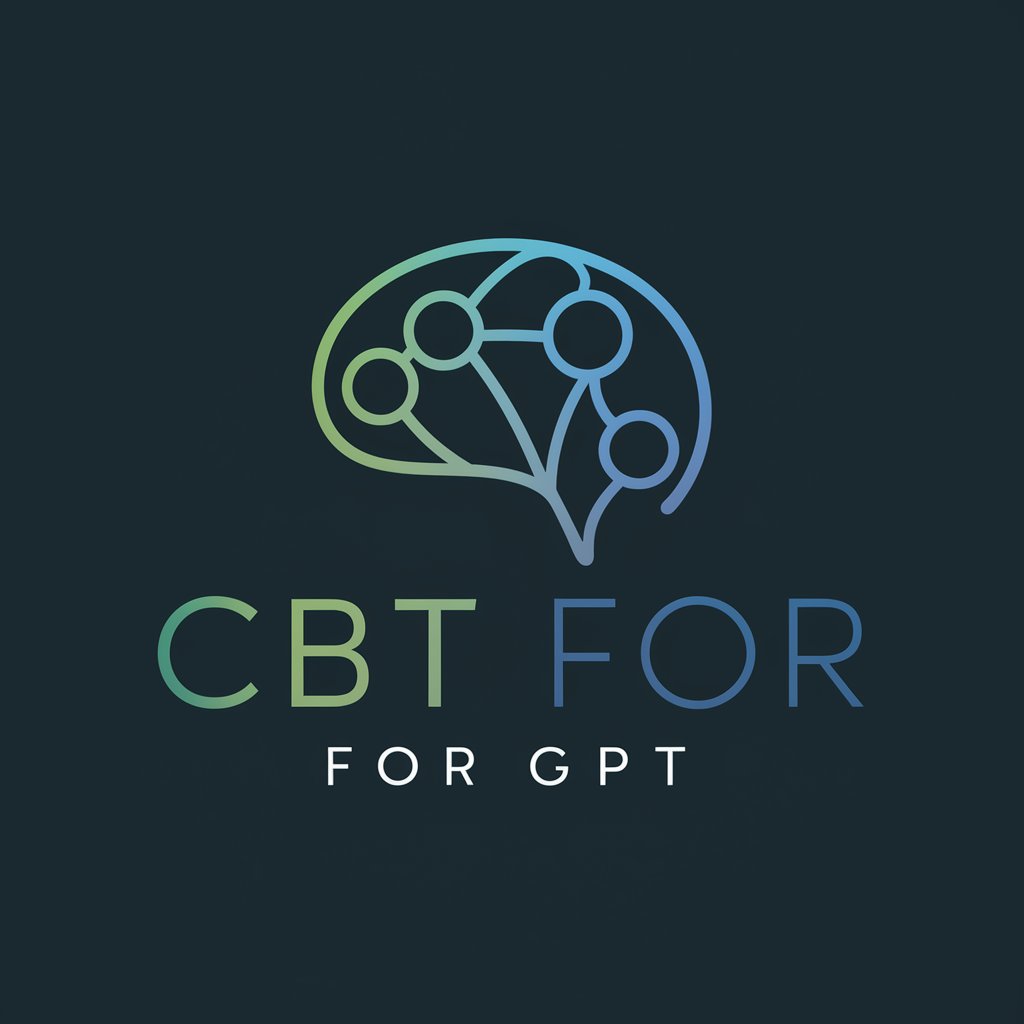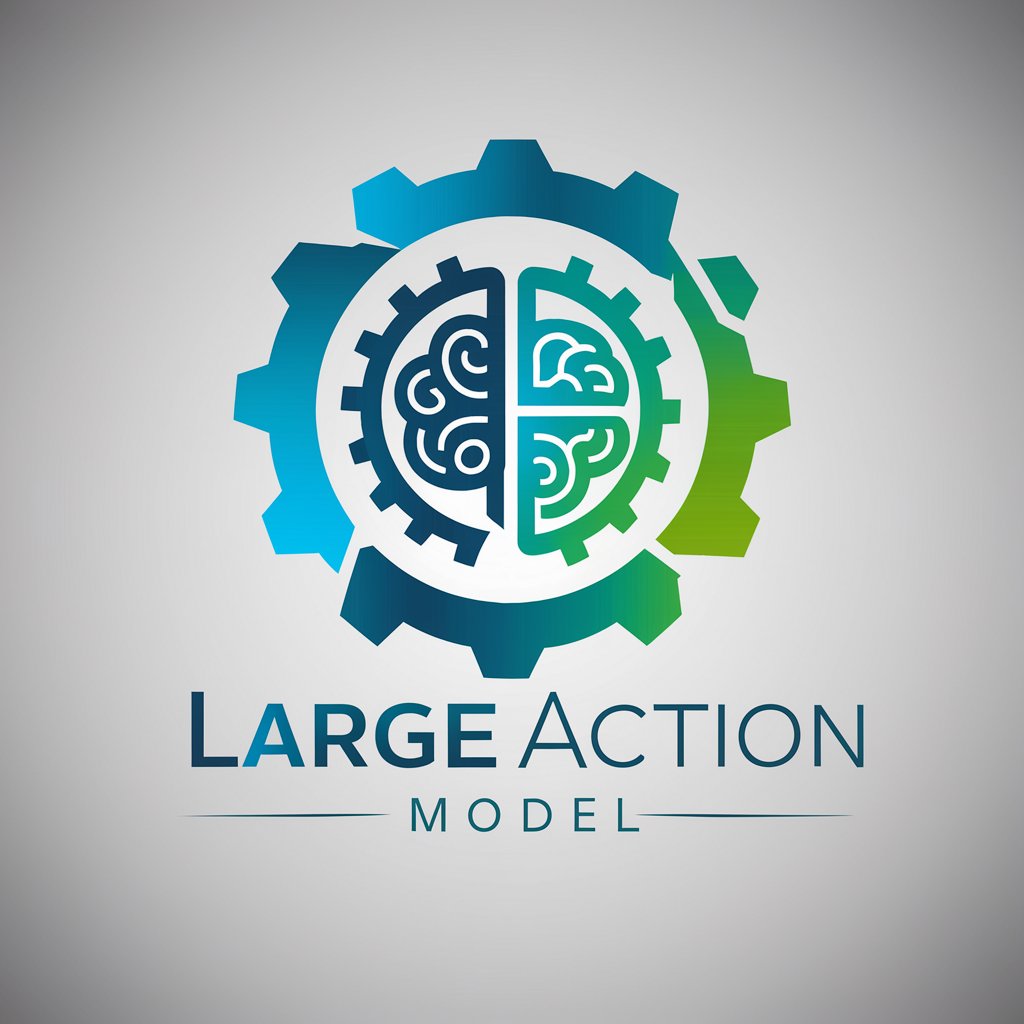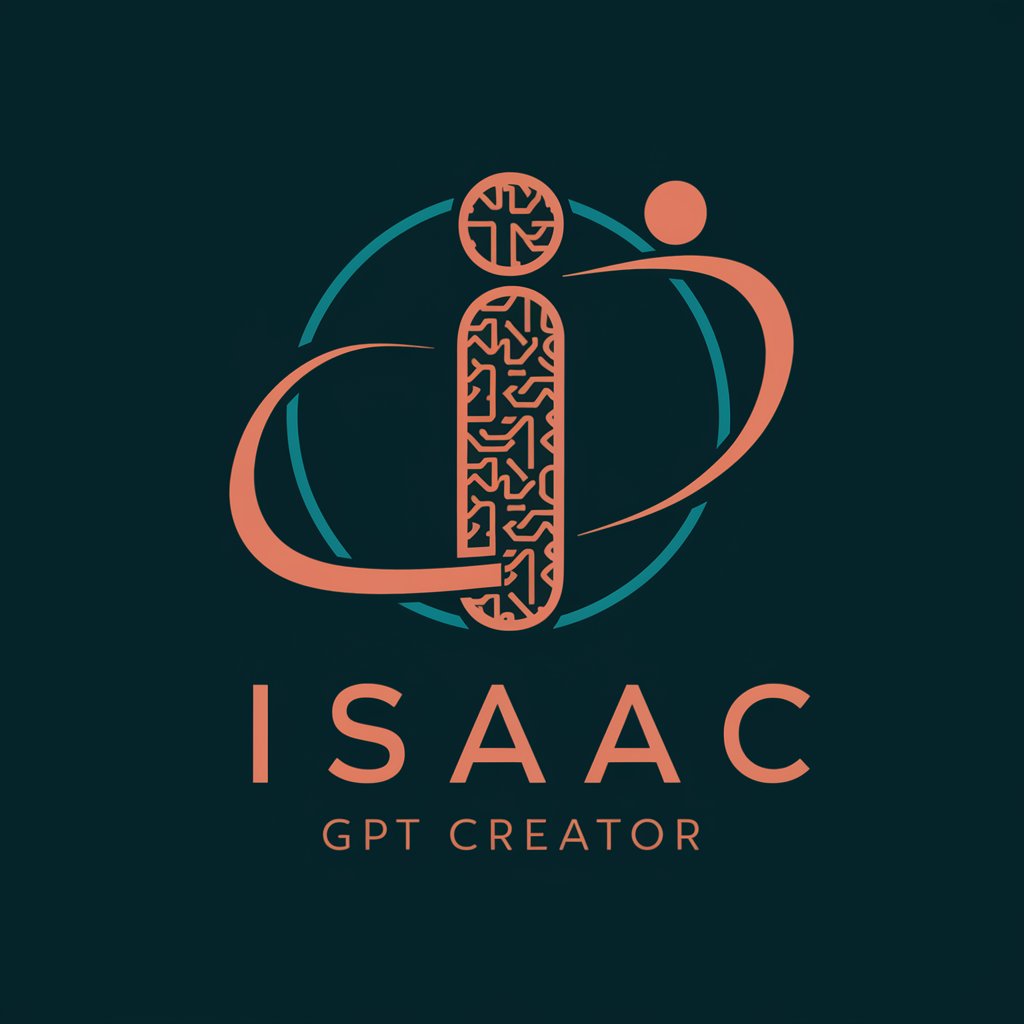CBT For GPT - CBT Interactive Guide

Welcome! Let's explore Cognitive Behavioral Therapy together.
Empowering Self-Care Through AI
Explain the main principles of Cognitive Behavioral Therapy (CBT).
What are common cognitive distortions identified in CBT?
How can mindfulness be integrated into CBT practices?
Describe the process of challenging negative thoughts in CBT.
Get Embed Code
Introduction to CBT For GPT
CBT For GPT is a specialized tool designed to provide information and practical insights related to Cognitive Behavioral Therapy (CBT). It serves as an educational and supportive resource for individuals interested in understanding the principles of CBT, its methodologies, and how they can be applied to address various cognitive and emotional challenges. The platform is structured to educate users on the core concepts of CBT, such as identifying and challenging negative thought patterns, understanding the relationship between thoughts, emotions, and behaviors, and employing strategies to alter detrimental cognitive processes. For instance, a user might be presented with a scenario where they're dealing with anxiety related to public speaking. CBT For GPT would guide them through identifying their automatic negative thoughts about the situation, challenge the validity of these thoughts, and propose alternative, more balanced thoughts to reduce anxiety. Powered by ChatGPT-4o。

Main Functions of CBT For GPT
Education on CBT Concepts
Example
Teaching users about cognitive distortions such as 'catastrophizing' or 'black and white thinking,' and how these distortions affect one's emotions and behaviors.
Scenario
A user feeling overwhelmed by a minor mistake at work might learn to identify this as 'magnification' and apply techniques to gain a more balanced perspective.
Skill-Building Exercises
Example
Guiding users through practical exercises like thought records, where they document negative thoughts, identify the distortions, and work on reframing these thoughts.
Scenario
A person struggling with low self-esteem might use thought records to challenge self-critical thoughts and replace them with more constructive and self-compassionate ones.
Mindfulness and Relaxation Techniques
Example
Introducing users to mindfulness practices and relaxation techniques such as diaphragmatic breathing or progressive muscle relaxation to manage stress and anxiety.
Scenario
An individual dealing with stress from job responsibilities might be guided through a series of relaxation exercises to help manage their stress levels more effectively.
Ideal Users of CBT For GPT Services
Individuals Seeking Self-Help Strategies
People interested in personal development, coping strategies for stress, anxiety, or mild depressive symptoms, and those looking to enhance their mental well-being through self-guided exercises.
Students and Educators in Psychology
Students learning about psychological therapies and educators teaching courses related to mental health, psychology, or counseling may use CBT For GPT as a supplementary educational tool.
Professionals Looking for Coping Mechanisms
Working professionals facing occupational stress, burnout, or seeking to improve their emotional intelligence and interpersonal skills could benefit from the CBT-based strategies provided.

How to Use CBT For GPT
1
Visit yeschat.ai for a complimentary trial, no ChatGPT Plus required or signup necessary.
2
Select the 'CBT For GPT' option from the main menu to begin your cognitive behavioral therapy journey.
3
Choose a specific module based on your needs, such as 'Centering Tools', 'Compassion Tools', or 'Addressing Your Presenting Problem'.
4
Engage with the interactive prompts provided by the tool to explore your thoughts, emotions, and behaviors in a structured way.
5
Utilize the feedback and suggestions provided by CBT For GPT to practice cognitive restructuring and behavioral experiments.
Try other advanced and practical GPTs
Large Action Model
Empowering decisions with AI insights.

UnoGPT
Elevate Your Uno Game with AI

Script Monster for Real Estate Agents
Empowering Agents with AI-Driven Dialogue

Professor Academia
Empowering academic exploration with AI

Python and Chess Decision-Making Guide
Empower your programming and chess strategy with AI

AI History HUB - Historical Document Tutorial
Bringing history to life with AI-powered visuals

Game Design Guru
Empowering Your Game Design Journey

DesignWise: AI for Human-Centered Innovation
Empowering design innovation with AI

Web Designer
Craft Stunning Websites with AI

Historical Points of View
Wisdom from the Past, Powered by AI

Isaac GPT Creator
Empowering Innovation with AI

30 English Expressions
Discover English, Express Differently

FAQs About CBT For GPT
What is CBT For GPT?
CBT For GPT is a cognitive behavioral therapy tool powered by AI, designed to provide users with information and practical exercises related to CBT principles.
Can CBT For GPT replace therapy with a professional?
While CBT For GPT offers valuable CBT insights and exercises, it's not a substitute for professional therapy. It's designed to complement therapy by providing additional resources.
How often should I use CBT For GPT for the best results?
Regular interaction, such as daily or several times a week, is recommended to fully benefit from the cognitive restructuring and mindfulness practices provided.
Is CBT For GPT suitable for beginners?
Absolutely. CBT For GPT is designed with both beginners and those familiar with CBT in mind, offering easy-to-follow steps and explanations.
Can I track my progress with CBT For GPT?
While CBT For GPT provides tools for self-reflection and learning, tracking progress is self-managed. Users are encouraged to journal or note changes in thoughts, feelings, and behaviors over time.
